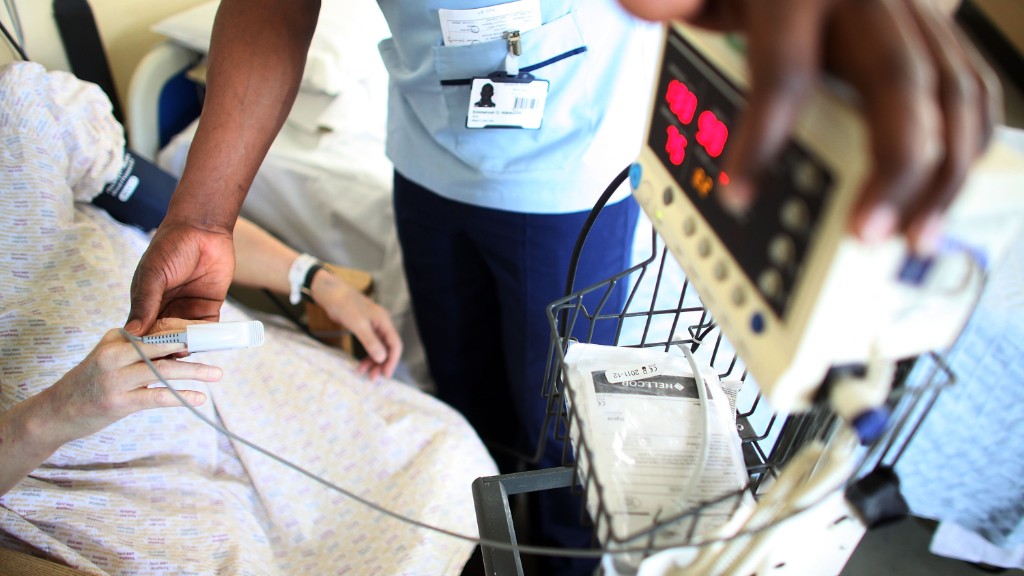
California's Obamacare premiums will jump 13.2% on average next year, a sharp increase that is likely to reverberate nationwide in an election year.
The increase, announced by the Covered California exchange Tuesday, ends the state's two-year respite from double-digit rate hikes.
The announcement comes as major insurers around the country seek even bigger rate increases for open enrollment this fall, and the presidential candidates clash over the future of President Obama's landmark health law.
Related: Insurers want to hike Obamacare premiums 10% for 2017
California won plaudits by negotiating 4% average rate increases the past two years for its 1.4 million enrollees. But that feat couldn't be repeated for 2017, as overall medical costs continue to climb and two federal programs that help insurers with expensive claims are set to expire this year.
Health policy experts said California is rejoining the pack after keeping rate increases lower than much of the country during the first years of Obamacare.
"This puts a chink in the armor of the California story," said Larry Levitt, a senior vice president at the Kaiser Family Foundation. "It's still a more stable market than other states, and by most measures the Affordable Care Act is working quite well in California." (Kaiser Health News is an editorially independent project of the Kaiser Family Foundation.)
Critics of the health law, including presumptive Republican nominee Donald Trump, have been quick to seize on these rising costs as further proof that the Affordable Care Act is failing the average consumer and warrants repeal.
The Obama administration counters that federal subsidies spare most consumers from the full impact of the premium increases and the health law enables people to shop around for a better deal.
Last week, consulting firm Avalere Health found that the average rate increase being sought for widely sold silver plans was 11% across 14 states. But consumers could limit the increase by choosing one of the lower-cost silver plans, which are set to go up only 8%.
Peter Lee, executive director of Covered California, said prices for 2017 reflect the rising cost of care, not efforts by insurers to increase their profits.
"Under the new rules of the Affordable Care Act, insurers face strict limits on the amount of profit they can make selling health insurance," Lee said, noting profit averages of 1.5% across plans the states has contracted with.
Two federal programs that have helped health insurers offset costly medical claims and cover sick patients in general end this year. They were intended as a temporary cushion for insurers who are now required to accept all applicants regardless of their medical histories.
To press their case for higher rates, health insurers said they had the benefit of detailed data on exchange customers and their medical claims for the first time since these marketplaces opened in 2014.
Many consumer advocates in California had hoped that UnitedHealth Group (UNH) would become another formidable competitor on the state-run exchange. But the nation's largest health insurer is leaving Covered California after just one year of minimal participation — part of a broader pullback nationwide after the company posted heavy losses on individual plans.
Related: UnitedHealth to exit California's Obamacare market
The top four insurers in Covered California, led by Blue Shield of California and Anthem (ANTX), control more than 90% of enrollment.
The premium increases in California will vary widely by region and by insurance company, and could pinch the pocketbooks of cost-conscious consumers like David Arnson.
Arnson, 57, of Los Angeles, qualifies for a federal subsidy and pays just $32 each month for a Molina Healthcare policy he purchased through Covered California. He relies on the coverage to help pay for treatment for ankle and knee problems.
"I make a marginal living. Like anything, you want to pay as little as possible," said Arnson, who works at a record store and plays in a band. "I need healthcare — it is at the top of my pyramid of necessities."
The higher rates in California may spur more consumers to switch health plans. Only 14% of Covered California enrollees who returned this year chose a different insurer. On the federal exchange, 43% of people switched plans for 2016.
However, the proliferation of narrow networks can make shopping complicated since certain doctors and hospitals may only be available through one or two insurers, and provider directories are often inaccurate.
The expansion of coverage under the Affordable Care Act has driven the percentage of uninsured Californians to a record low.
The share of Californians lacking health insurance was 8.1% at the end of last year, down from 17% in 2013, federal data show.
The expansion of Medi-Cal, the state's Medicaid program for lower-income residents, accounts for a significant part of that reduction. Since January 2014, nearly 5 million people have joined the Medi-Cal rolls, bringing total enrollment to 13.4 million — about one-third of the state's population.
Anna Gorman contributed to this report.
Kaiser Health News is a national health policy news service that is part of the nonpartisan Henry J. Kaiser Family Foundation.


